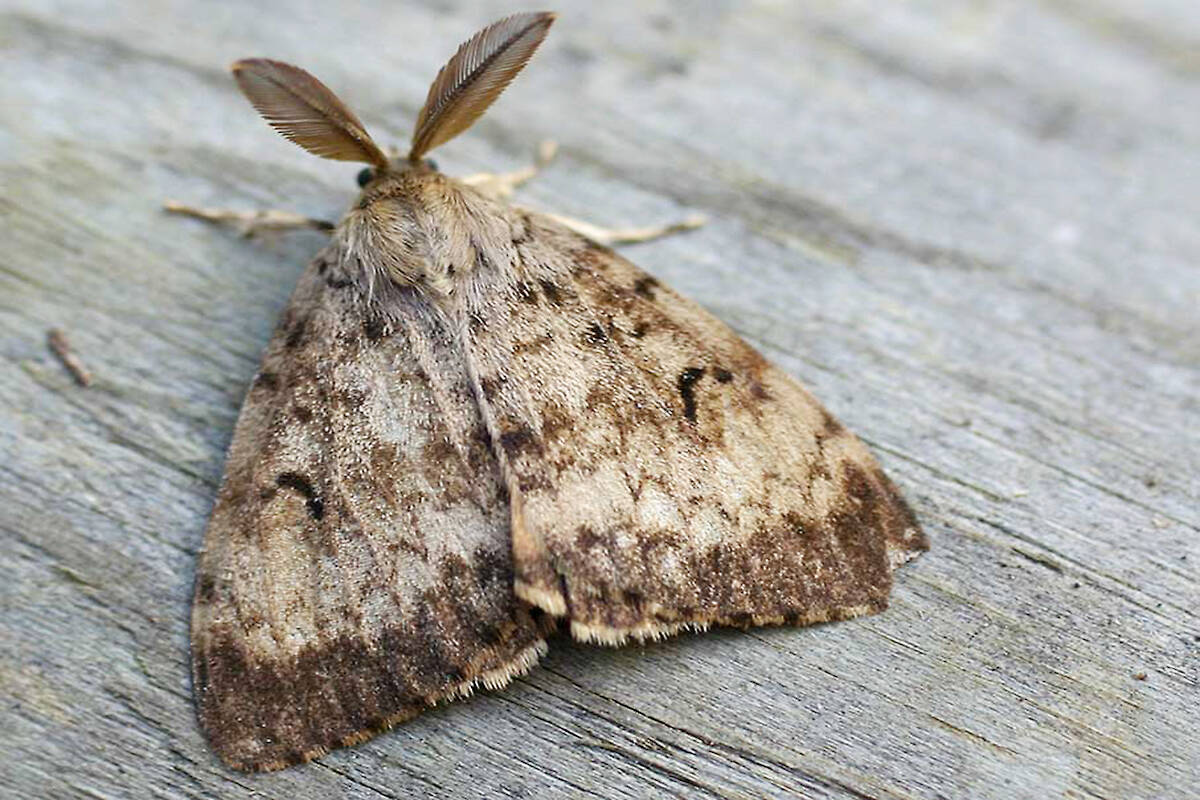Aerial spraying is set to start soon against lymantria moths, formerly known as gypsy moths, at a handful of Lower Mainland locations.
Aerial pesticide treatment is planned for:
* Chilliwack (49 hectares along Chilliwack River Road);
* Mission (341 hectares);
* Langley (362 hectares);
* Surrey (108 hectares in the Grandview Heights area); and
* Burnaby (193 hectares near Brentwood Mall).
“These treatments will prevent lymantria moths, formerly known as gypsy moths, from becoming established and to minimize the risk they pose to forests, farms, orchards and urban trees,” according to a news release on April 29 from the provincial Ministry of Forests.
The leaf-munching moths can destroy entire forests if left unchecked.
Traps and monitoring from last year showed there were “an above-average” number of male moths across the Lower Mainland region, meaning the moths could make themselves at home in those locations if left untreated.
There will be as many as four applications of the spray, from early May to late June, in the affected communities.
One Lower Mainland city that will see ground spraying rather than aerial application of the pesticide is Coquitlam, where 41 hectares will be treated, mainly on United Boulevard.
The provincial Ministry of Forests’ pesticide-use permit geared to controlling the moths, issued in 2021, was amended to include the six Lower Mainland sites.
The pesticide product, Foray 48B, features a non-toxic bacterial agent known as ‘Bacillus thuringiensis var kurstaki’ or Btk, which has been used to control moth larvae in Canada since 1961.
“Organic farms in the spray area treated with Foray 48B will not lose their organic certification,” according to the release.
That’s because the main ingredient “Btk” is naturally present in urban, agricultural and forest soils across B.C. It exclusively targets caterpillar stomachs and does not harm humans, mammals, birds, fish, plants, reptiles, amphibians, bees or other insects.
These moth populations have “increased dramatically in the areas slated for treatment this spring, likely resulting from outbreaks in Ontario and Quebec” during the past three years. Egg masses get transported to B.C. on recreational vehicles or outdoor household items originating from outside of the province.
The invasive moths could spread to Garry oak, arbutus, red alder, aspen, cottonwood, maple, orchard fruit trees, nut trees, and many species of urban ornamental trees would be affected, as well as food crops such as apples, blueberries and other fruits.
More details www.gov.bc.ca/lymantriamoth, or by calling 1 866 917-5999 toll-free.
To see a map of planned treatment areas, www.gov.bc.ca/lymantria-news
RELATED: Area around the Port Mann targeted in 2019
RELATED: Moths hanging in there near Guildford
Something to add to this story, or a story tip? Email:
jfeinberg@theprogress.com
@CHWKjourno
Like us on Facebook and follow us on Twitter.

